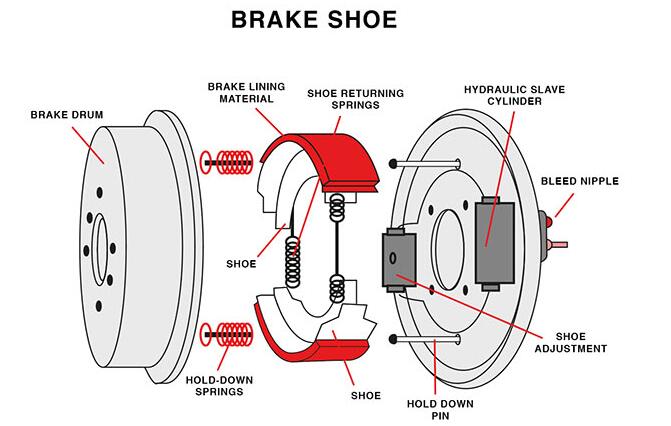Brake Pads vs. Brake Shoes
We often take our brakes for granted - especially when they work as we expect them to and keep us and other road users around us safe. So it makes sense to learn more about them, starting with: What's the difference between brake pads and brake shoes?
We often take our brakes for granted - especially when they work as we expect them to and keep us and other road users around us safe. So it makes sense to learn more about them, starting with: What's the difference between brake pads and brake shoes?
First of all, are brake pads and brake shoes the same thing? The most concise answer is no. While they both perform similar functions, they operate in different types of braking systems and have different advantages (and disadvantages).
What are brake pads?
In tires, a brake pad is a flat piece of steel with a thick layer of friction material on one side. This type of friction material can vary, depending on the type and size of the vehicle and the type of caliper.
The driver operates the disc brake system by putting his foot on the brake pedal. This pushes the master cylinder, which is basically a piston surrounded by brake fluid. The fluid moves down the brake line, forcing the caliper to squeeze a pair of brake pads onto the disc. This, in turn, slows the wheels down. The energy released by stopping the car's motion is converted into waste heat, which must be dispersed. This type of brake provides better braking performance than drum brakes because of the relatively quick cooling time of the discs. Over time, the layer of friction material becomes thinner as a result of use, and eventually the brake pads need to be replaced.

What are brake shoes?
Brake shoes carry the brake linings within the brake drum system. They are a curved piece of metal with friction material fixed to one side.
When the driver applies the brakes, the wheel cylinders in the drum brake system push the brake shoes outward toward the inside of the drum. This creates friction between the lining and the drum, causing the car to brake. Kinetic energy is dissipated in the form of heat. Brake shoes are typically used on the rear axle, especially since most modern cars brake more aggressively on the front wheels, so the rear brakes don't have to deal with as high a temperature. In addition to being less expensive to manufacture, drum brake systems are more effective as parking brakes than disc brakes.
What is the difference between brake pads and brake shoes?
The main differences between brake pads and brake shoes are
â— Positioning
Brake pads and brake shoes are positioned differently in their braking systems. Brake pads are placed in the caliper around the brake disc, and brake shoes are placed in the brake drum.
â— Wear and tear
Brake shoes usually last much longer than brake pads. They are usually located on the rear axle and take on a much lower percentage of the braking work.
Do I need brake pads or brake shoes?
While you can't mix and match on the same wheel - for example, using brake pads with drum brakes or brake shoes with disc brakes - you can use both brake pads and shoes on the same car. In fact, many cars use a combination of the two, usually smaller vehicles with disc brakes on the front axle and drum brakes on the rear axle
ALLMAX Brake Components
With so many options available, it's important to choose quality components for your braking system. That's why you need ALLMAX .
